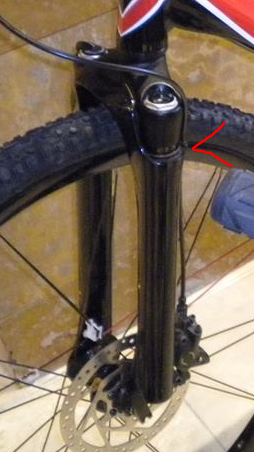Or if you prefer...
Originally, an "allegorical reference to the Hindu Ratha Yatra temple car, which apocryphally was reputed to crush devotees under its wheels"
...or a comic book villain. Any way you slice it, once you get them started, it's hard to stop them.
Yeah, that sounds like TREK alright.
It seems that they have been drinking the Specialized Kool-Aid as of late
and suing anyone who uses the word "TREK," even their former team sponsor,
Subaru.
"Why?" You might be asking...
Well, mostly because they are dicks but also because, much like a dog, they MUST "trade mark" everything they see in order to show every other dog that
"This is MINE!!"
Would ya look at that...a dog with two asses.
When I say they trade marked everything, I mean it.
Like non-alcoholic beverages...
Plus, "electric wrist watches" and "powders used in the preparation of sports drinks and energy drinks..."
Damn. There goes my chances of launching my new beverage line, "Jason's Own: Instant Non-Alcoholic Trekking Fuel."
Truth be told it was the "Off road all-terrain utility vehicles" part that got Subaru in trouble.
See, TREK believes that when you see this:
2013 Subaru Cross Trek
...you are going to confuse it with this:
TREK Domane
Proof:
I call bullshit. A typical TREK Madone says "TREK" on it no less than 12 times.
It's kind of hard to miss that.
I am pretty sure it is clear who makes this bicycle.
Also, TREK is not exactly suffering, I mean, they are making a little over a half BILLION dollars a year selling you "new" stuff.
In fact, they spend around 15 MILLION on advertising every year. It's safe to say that a bicycle company who has that type of cash on hand is doing okay for themselves, and shouldn't be too worried about a car company taking business from them. Though there is likely a Venn diagram out there somewhere that shows that some people who ride a TREK also drive a Subaru, that would be as effective an argument as saying that some people who drink PBR also ride fixies. TREK was sure to use said argument however, saying that;
"Subaru is marketing and selling its services through
similar channels of trade and to identical or similar consumers as Trek--
similar channels of trade and to identical or similar consumers as Trek--
persons that engage in outdoor recreational activities using utility vehicles."
So people that ride mountain bikes also drive SUV-like automobiles?
Imagine that.
Subaru did have a relationship with TREK in the before times and that is what is at issue here.
Whoops.
Now, I ain't no lawyer, but here are some thoughts:
It was not so much the fact that Subaru used the work "TREK" in the name of their car, mostly because the registered trade mark was in relation to the word "TREKKER" and therefore should not be arguable.
That said, TREK does indeed claim that the Subaru CROSSTREK logo is;
"confusingly similar in design and style to Trek’s logo
as registered and used in connection with TREK business"
However, it was the nature of their previous relationship which TREK takes as a violation of the trust the two companies had.
Though that trust came as a result of TREK honoring the original deal that Subaru had with Gary Fisher, when they purchased them in 2001.
So while you can argue that Subaru, in naming their car after a term for
might have overlooked a potential issue, you could also argue that had TREK not bought Gary Fisher, everyone could still play together peacefully in the sandbox.
What kills me here is that I am positive that the two parties found
their arrangement mutually beneficial, and once that arrangement ended, the honeymoon was over. Like breaking up with a girl... You used to get along! You even used to share. Now, you have 24 hours to get your shit out of her house or she's calling the cops! From "girl I love" to "crazy bitch" in the time it takes to throw your mountain bike off her balcony.
I could go on about this for ever as the official docket is quite lengthy, but instead, You can read it for yourself by clicking HERE
In summation I will say this, TREK may have a case, but after reading the whole thing I must say that it appears that they are reaching pretty far in a few areas. Subaru is being charged with 6 counts that are largely presumptuous. Unfortunately for Subaru, the "facts" are in,
and that may give TREK a leg up as TREK is requesting a jury trial which may be beneficial to the party that is considered admired:
It is one thing to say that TREK is "well-established." That is, by definition a "fact," meaning, you can quantify it. But saying they are admired is a matter of opinion. Just ask Jared...
Clearly there is room for interpretation.


































.JPG)



















